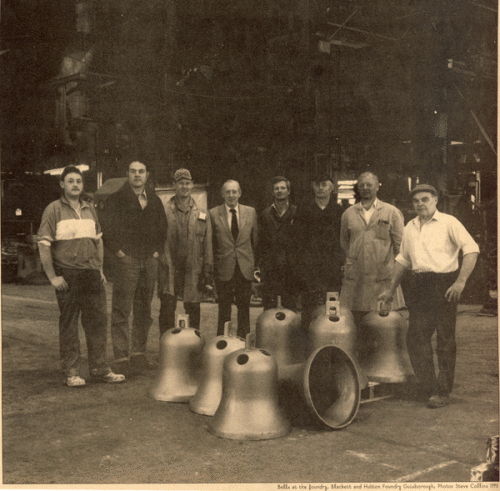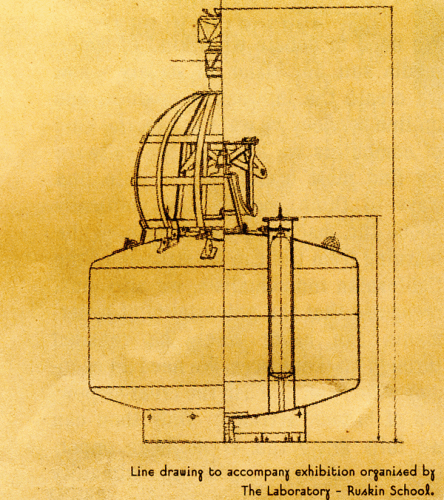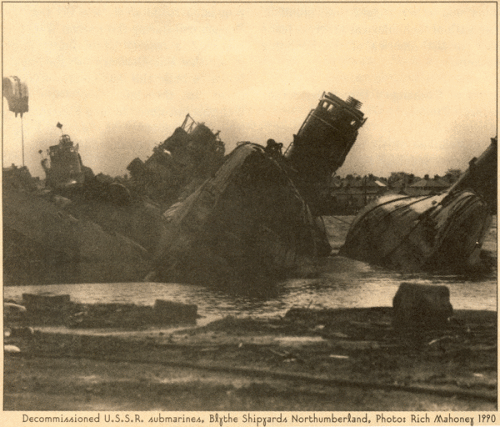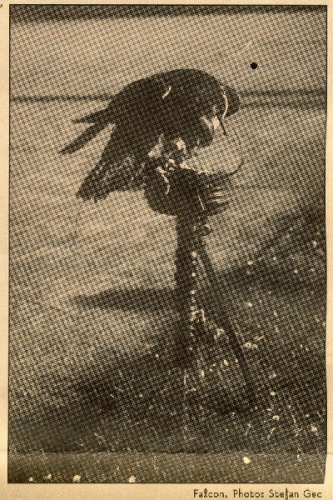"BUOY" A Trans-European Project
During May and June of 1996, a metal buoy, designed to function as a temporary marker, weighing 5 tonnes and measuring 16ft by 10ft, will be exhibited at the Historic Quays in Hartlepool, a city and port on the north-eastern coast of England, as part of its first Maritime Festival. The buoy will then be shipped to at least ten locations off the north European coastline over the next five years. It will function as a navigational aid, marking shipping lanes and signalling areas of either danger or safety. A World Wide Web site has been set up to account for this unusual exhibit and its subsequent function. This will detail all information regarding the buoy, including the schedules, Admiralty charts and maps of its anchor points - information issued by the International Association of Light-House Authorities (IALA). The IALA is the professional institution which is responsible, amongst other things, for maintaining and monitoring "The IALA Maritime Buoyage System", two systems of maritime signage and buoys. These systems of buoyage are made up of five different types of marks designed to assist maritime navigation. They range from 'lateral' marks used for well-defined channels, 'cardinal' marks used to indicate navigable waters, 'isolated danger' marks to indicate dangers of 'limited' size, `safe water' marks and 'special' marks which are designed to 'indicate an area or feature referred to in nautical documents'. These 'special' marks are permanent anchor points, but their signs, i.e. buoys, may change according to the information being conveyed. This information is listed by the IALA as referring to either 'Ocean Data Acquisition Systems marks, traffic separation marks, spoil ground marks, military exercise zone marks or recreation zone marks'. Coloured yellow, these buoys are temporary installations reflecting the ephemeral nature of the information they are designed to denote. In this instance, the buoy on exhibition falls into this latter category. It will be transported to a range of sites and thereby represent a range of different types of information.

Image: Steve Collins, Bells at the Foundry, Blackett and Hutton Foundry Guisborough, 1990
In Alston, Cumbria, the north-west of England, during the midsummer of 1991, a falcon took flight and soared into the overcast sky, perching momentarily on a branch high in a nearby tree only to swoop down and resume its position on the out-stretched arm of the falconer. Attached to its feet were a tiny pair of half-inch diameter metal bells.
In Newcastle upon Tyne, the north east of England, during the late summer of 1990, eight metal bells measuring 3ft by 2ft hung suspended from a wooden pontoon at the base of the High Level Bridge.
These disparate objects and events are a series of three, a trilogy of artworks titled "Buoy" (1995 - 1999), "Lure" (1991) and "Trace Elements" (1990) respectively, which are in turn related by three primary sources: -
Firstly, all works have been conceived by the artist Stefan Gec.
Secondly, the metal incorporated into the material make-up of all of these pieces was derived from the metal of eight decommissioned U.S.S.R. submarines.
Thirdly, all these pieces have been informed by an event which has shaped the personal history and life of the artist Stefan Gec.

He explains:
"In 1942 my father, a Ukrainian, was forced to leave his home and family to work as a labourer in Austria after the advancing German army had reached his village. When the war ended,'the political situation within the Soviet Union and the Cold War made it impossible for him to return. All communication with his family came to an end."
Stefan Gec's trilogy is art as process through time and space, as history, as narrative, as literally story-telling, as geography, as community, as identity tapping into 'Art and Life'; the conceptual threads of which run through both the themes and material operation of the pieces themselves.
The story of the metal from the former Soviet submarines is about transformation and displacement through time and space. The metal has been variously forged and reassembled to undertake a variety of functions and a range of services whilst being physically transposed across geographic locations and national boundaries. From sea to river to land and air and now sea again, the metal in "Trace Elements", "Lure" and now "Buoy" has occupied, will continue to occupy time and thereby ultimately construct its own history.
In its initial form as a submarine, the success of this technology of war resided in physical concealment. Through concealment, it maximised its function; to physically destroy the opposition and thus protect or expand economic, political or geographic boundaries. The primary function of a sea-bell is as a technology of maritime guidance. Usually located amongst the rocks at the base of light-houses, it serves to warn vessels both beneath and above water of potential danger. It is in this form of the sea-bell that the smelted-down submarine metal moved from sea to tidal river, to be both concealed and revealed through the ebb and flow of the tide in "Trace Elements" - the first part of the trilogy. The metal was then re-fashioned again as the bells in "Lure". In this form, albeit radically scaled down, it functioned as an auditory signal which denoted the position of the falcon in flight and so occupied the completely different elements of air and land. But "Lure" taps into a hidden use of the landscape in which the event was staged, namely that of low-flying military aircraft practice. The flight of the falcon, a predator, echoes and mirrors the movement and function of airborne technologies of war and destruction. Now as "Buoy", the metal will return to the sea, but refashioned to serve as a navigational point and so as a suppository of navigational information. From water to air and water, to air and land, and back to water, the metal undergoes a completely balanced cycle through the elements.

Image: Rich Mahoney, Decommissioned U.S.S.R submarines, Blythe Shipyards Northumberland, 1990
These changing functions through time foreground the second story written into the life of the metal, that of geographical displacement. The eight decommissioned U.S.S.R. submarines, the source of the metal, originated from the ports of Gdansk, Riga, Leningrad, Murmansk, Archangel'ski, Salekhard, Sevastopol and Odessa. The journey of the metal can be traced from these far-flung Soviet ports to the north east of England in the form of "Trace Elements" (Newcastle upon Tyne). From here to Cumbria in the north west in "Lure", and back again to the east of England (Hartlepool) in "Buoy" and the ten subsequent maritime anchor-points dotted along the northern coastline of mainland Europe. Over a period of five years the metal is taken on a journey to be floated in deep-waters off the coasts of Iceland, north west Scotland (Glasgow), eastern Ireland (Dublin), eastern England (Hull), Denmark (Copenhagen), Norway (Oslo), Sweden (Stockholm), Latvia (Riga), Finland (Helsinki) and Russia (St. Petersberg) to terminate in Murmansk. Back to a macro-view, this journey maps out the movement of a metal originating in the former U.S.S.R. to the west and back again to one of its ports of origin at Murmansk.
"Trace Elements", "Lure", and now "Buoy" mark not only changes in the function of the metal, but also its transition from the decommissioned submarines of 'Life' into 'Art'. Or rather its occupation of a peculiar mid-way point where it functions as poetic symbol and fulfils a utilitarian function. It is in this curious state of flux between the worlds of 'Art' and 'Life', occupying both time and space, that the trilogy will weave its own web of narratives becoming part, not only of public culture, but lodging itself in the memories of all who encounter it.
Throughout the trilogy, the transformed and displaced metal functions as a poetic metaphor for the enforced displacement Gec's father experienced as a result of the Second World War. The sub-marines, from which the metal originated, were part of the U.S.S.R. fleet. This was a military provision expanded during the Second World War and through the continuation of hostile East/West relations of the Cold War. The collapse of the Cold War and with it the demise of national and geographical boundaries resulted in the fall of the Soviet Union during 1989/90. The beginnings of a New Europe has witnessed a continuing state of flux and transition. From the Soviet Union to the West and back again to a newly constituted political and economic, but as yet still unstable, state of Russia, the journey of the metal partially mirrors the journey experienced by Gec's father. But whilst the metal will return back to one of its ports of origin, albeit in radically altered form, for Gec's father, the desire to return home will remain just that. This story of displacement is itself one of the dominant narratives characterising twentieth century Europe, tracing as it does the separation from community and concomitant sense of identity. The constantly changing function of the metal parallels the unsettling experience of displacement in terms of identity. Like the metal, the changes brought about through displacement become permanent. Unlike the metal it is impossible to physically return. 'Home' becomes someplace else that isn't accessible. The grand narratives of World History are made evident through the personal narratives of family history.
Gec identifies the significance of this event to him as an artist, "As a child I was told stories about my father's experiences and these have subsequently filtered through into my work where I have attempted to explore the personal and wider implications contained within this history."
The effects of World History are demonstrated, not only through shifting geographical and political boundaries, but also through the vagaries of the economic market-place. Again this adds a further layer of meaning to the trilogy. Gec observes that the collapse of the Soviet Union resulted in a Russia that was desperate for hard currency, hence the selling off of the former U.S.S.R. submarines for scrap. 'Battleship Wharf' - the name for the scrap ship-yard at Blyth - has been the centre for breaking up ships and submarines for the past hundred years. From the First World War, both military and non-military ships have been broken up for scrapmetal which is then recycled for further industrial or military use. This particular industry has been heavily dependent on the economics and technologies of warfare. The original place of exhibition of "Buoy", Hartlepool, draws upon and reinforces the strong historic trading links this port once had with the Baltic states. Hartlepool is representative of the heavy industries which once supported the economy of North East England and made this region the focus for ship-building and one of the primary trading routes between Britain and the mainland continent, particularly the Baltic states. It is ironic that the scrapping of ships is the only aspect of this industry which remains.
The Grand Narratives of World History are designed to ignore the realities of change as these are experienced on the edges; that is within the local, the marginalised, grassroot communities. For Gec, the journey of the metal in all its forms around the north-eastern edges of Britain and the northern continents, is designed to quietly draw attention to these changes. The demise of the North East of England as an area of international trading activity and heavy industrial manufacturing is evidence of one of the most significant recent shifts. A shift due partially to economic demand, but also to Government policy support shifting from a manufacturing base to the service-based industries, in particular information technology.

Image: Stefan Gec, Falcon
Again, Gec draws heavily upon this latest narrative of contemporary life which both informs and constitutes "Buoy" in the establishment of a WWW site. This extension to "Buoy" parallels the operation of the maritime buoy. The information in this site will change and accumulate each time it assumes a new position along the north European coastlines. Other forms of information retrieval are currently being explored by Gec in association with the art organisations supporting the project. They include using a satellite system, which will involve the buoy being fitted with a camera designed to document weather conditions, and recording all the conditions of the environment in which the buoy is located at any time of day. As the artist explains, the aim of re-presenting and (in this instance) retrieving and so making accessible any form of information through the WWW ultimately "... alters your relationship to the buoy itself. As the buoy becomes like a satellite itself, endlessly recording information which can be accessed by anyone, in a system which privileges the endless proliferation and dispersal of information."
Whilst the material object buoy has been floated in real seas subject to the vagaries of the elements, so too the conceptual project of "Buoy" has been floated in the endless flow of information found on the net. But whilst the net enables the democratisation of access to information (for those with access to the hardware), particularly for specialist interest groups, information technology has yet to make a positive impact for the many communities left behind in this latest revolution.
It is one such community, at Murmansk, where the journey of the buoy in "Buoy" will terminate and be placed on permanent exhibition. Pushed to the geographical edges of both Europe and Russia, Murmansk is not only physically removed from the centre of current events but is also frozen in a time before I perestroika'. By siting "Buoy" here, the cycle of the metal is completed. Its story and transformation throughout the trilogy has spun its own narratives back out into the material world to make its own history and construct its own meaning. As Gec puts it, "'Buoy' will return loaded with this history and debris collected from other places and all the other stories accrued through time and in different places, to a place little changed from when it first left as a submarine."
© Helen Cadwallader
The ideas and views expressed here are those of Stefan Gec and Helen Cadawallader
Stefan Gec's first catalogue "Trace Elements" is available from Locus+. For further details e-mail: <locusplus AT newart.demon.co.uk>, or phone Jon Bewley or Simon Herbert.
For information on "Buoy" contact The Laboratory at the Ruskin School of Drawing and Fine Art, Oxford University
This project is being developed in collaboration with the following arts organisations:
The Laboratory at the Ruskin School of Drawing and Fine Art, Oxford Locus+, Newcastle upon Tyne, Ormeau Baths Gallery, Belfast
Mute Books Orders
For Mute Books distribution contact Anagram Books
contact@anagrambooks.com
For online purchases visit anagrambooks.com






